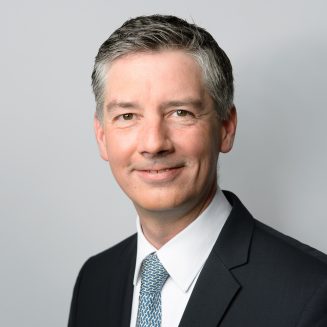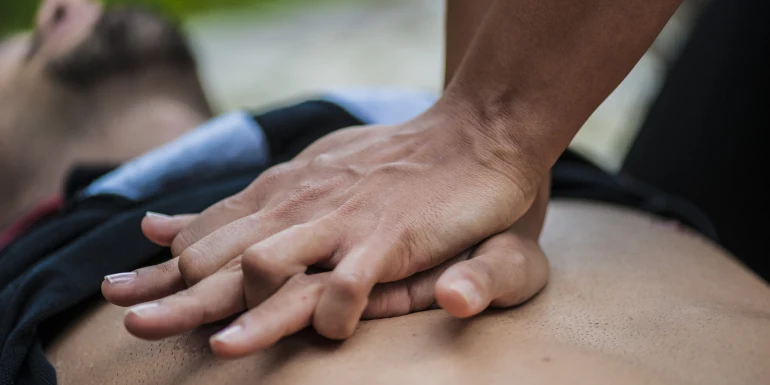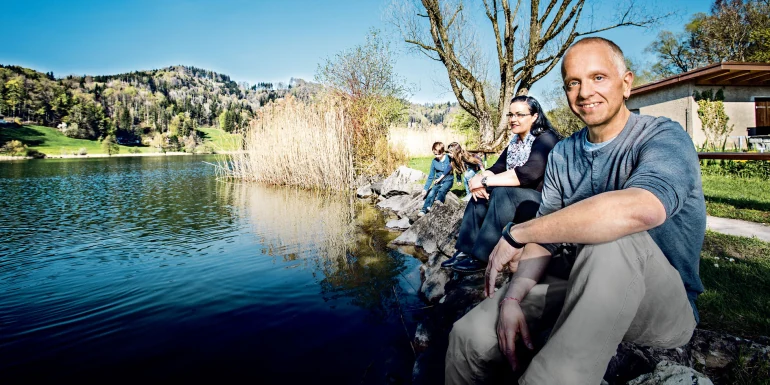
Heart attacks: occurrence, symptoms and first aid
If you don’t react quickly enough in case of heart attacks, heart muscle cells die off. However, what exactly happens during a heart attack and what should you do in an emergency?
How heart attacks occur
An unhealthy diet, overweight, little exercise, smoking and lots of stress are bad for our heart. They are some of the risk factors for cardiovascular disease and facilitate atherosclerosis, for example.
During arteriosclerosis, deposits form in the arteries, known as plaques. They consist of blood lipids and calcium. The bigger the deposits, the more disturbed the blood flow. If such plaques break open, this poses a great risk because a blood clot (thrombosis) can form very quickly in this location. This can completely block the artery.
Circulatory disorders in coronary blood vessels
Atherosclerosis can affect all arteries in the body, even the coronary vessels. They normally supply the heart with blood and oxygen. If there is no longer enough blood flowing through them, this can result in angina pectoris or even a heart attack. In the worst-case scenario, there is a risk of cardiac arrest. In this case, the person affected must be resuscitated immediately.
In order to ensure that as little of the heart muscle as possible dies off, the blocked location has to be reopened as quickly as possible. To that end, the doctor performs a coronary angioplasty. This involves inserting a plastic tube (known as a catheter) with a tiny balloon on the end into the blocked artery. The balloon is inflated, which causes the narrowed vessel to expand. In severe cases, a bypass operation is performed (which reroutes the blood).
First aid in case of heart attacks
1. Identify the symptoms
The symptoms of heart attacks vary between men and women. Men usually feel a sudden, strong, burning pain in the chest. Cold sweats, pain in the shoulders and arms and shortness of breath also occur frequently. Symptoms in women are often less specific: breathlessness, nausea or complaints in the upper abdomen. Until they reach the menopause, they are better protected against heart disease by their female hormones, but afterwards this protective effect decreases. Many women are unaware of this, which is why they don’t immediately suspect a heart attack if they have the symptoms mentioned above. That is the reason why women die almost twice as often from their first heart attack as men do.
If these symptoms are only weak or are entirely absent, it is called a silent heart attack. It goes unnoticed.
2. Call the emergency number 144
- Always call 144 rather than a general practitioner or neighbour; this saves valuable time.
- First tell the emergency services where you are located. Then describe exactly what happened. Is the person responsive? Are they breathing? If not, you will receive resuscitation instructions.
- Never drive to the hospital yourself, as this can cost time. An emergency doctor will perform the essential first aid on site.
3. The person is conscious: how to help with a heart attack
- Do not lay the person horizontally – position them with their upper body raised to relieve their heart.
- Loosen tight clothing items such as belts or ties so that the person can breathe more easily.
- Calm the patient and try to avoid stress or excitement.
- Do not leave them alone until the paramedics take over. A heart attack can lead to cardiac arrest è the patient must be resuscitated.
4. The person is in cardiac arrest: Immediately start to perform a cardiac massage
The person is no longer responsive, is not breathing or is breathing irregularly: Kneel down beside the patient. In this way, your arms will not have to bear the full burden. Put one hand over the other and then place both hands in the centre of the lower half of the patient’s breastbone. Start the cardiac massage. The optimum frequency lies at 100 to 120 repetitions per minute. Press down until you reach a depth of 5-6 centimetres. Release all of the pressure from the thorax, so that enough blood flows back to the heart.
How to prevent heart attacks
Exercise regularly. Make sure you have a balanced diet. Don’t smoke and monitor your mental health. Avoid stress as much as possible. Further tips on a heart-healthy lifestyle are available here. How can you lead a more mindful and heart-healthy life? Find suggestions for your day-to-day life here:
Smokers, people with high blood pressure, severe overweight or elevated cholesterol levels are at greater risk. They should therefore undergo regular medical examinations.
Life after a heart attack
After a heart attack, behavioural and lifestyle changes form the basis for all forms of treatment. They reduce the risk of having another heart attack or a different type of cardiovascular disease. Cardiovascular patients build up their strength again by following exercise programmes. Later on, it is about integrating what they have learnt into their daily routine and sticking to it. Quite a few patients also require psychological counselling to process the heart attack.

Dr Robert C. Keller is the Managing Director of the Berne-based Swiss Heart Foundation. He has long-standing experience in the field of cardiovascular disease and heads up the areas of research and prevention at the foundation.



Newsletter
Find out more about current health issues every month and get all the information you need about our attractive offers from all Helsana Group companies * delivered by e-mail to read whenever it suits you. Our newsletter is free of charge and you can sign up here:
We did not receive your information. Please try again later.
* The Helsana Group comprises Helsana Insurance Company Ltd, Helsana Supplementary Insurances Ltd and Helsana Accidents Ltd.